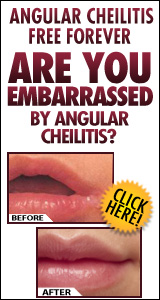Dark Spots Or Hyperpigmentation And The Treatment
Noticing dark spots or patches on your Skin.
Many women suffering from skin problems and have a question like
Why do we get pigmentation ,
pigmentation comes on face,
Reason for pigmentation on face,
Skin pigmentation causes,
Stap by stap Hyperpigmentation treatment And hyperpigmentation cream
So today we trying to find answer
Today we are going to talk about these dark spots or hyper-pigmentation and the treatment options for it.
We have divided this in 3 parts
Part-1 focuses on what is hyperpigmentation, how it happens and its causes.
Part-2 will focus on different types of hyperpigmentation, their specific causes and treatments.
The-3rd and last part focuses on the different treatments of hyperpigmentation.
So let’s start part 1.
It is important to understand the normal physiology
of our skin to understand hyper pigmentation.
So let us use this diagram of skin to understand
the skin better. Our skin has 3 layers.
The lowest layer is called subcutaneous fat.
This layer defines the structure and contours of
the skin but this layer has no connection to pigmentation.
Dermis is the layer above the subcutaneous fat.
It is the thickest layer.
This layer has our sweat glands and hair follicles.
This layer also has the pink collagen matrix.
This collagen is flexible but strong.
It keeps the skin healthy and young.
It also plays an important role in skin formation.
The dermis also does not have any role in skin pigmentation.
Hyper pigmentation occurs in the skin’s epidermis.
The epidermis also has two levels.
The bottom layer of the epidermis is live and the top layer is the dead skin
layer that is called the stratum corneum.
Below the live layer of the epidermis and
the dermis, there is a basilar layer or basal cell layer.
This is a like a border.
New skin cells or epithelial cells grow between
the border layer.
These epithelial cells migrate till the upper
layers and replace the dead skin cells.
This border layer also has darker cells called
melanocytes.
These cells make a pigment called melanin
in our body which gives our
skin colour.
This melanin pigment plays the main role in
pigmentation and depigmentation.
Now let us see how epithelial cells reach
the epidermis.
These epithelial cells are continuously generated
one after the other and they keep moving towards the skin’s upper
surface.
When these epithelial cells reach the skin’s
surface, they function as the
skin’s barrier and regulate water loss. Then they keratinise, die and flatten
out.
There are many such dead epithelial cells
on the skin.
The epidermis protects our skin.
Multiple melanocytes are present in the epidermis.
They use the enzyme tyrosine’s and form the pigment melanin.
This melanin gives the skin its colour.
This melanin pigment gets transferred to the epithelial cells.
When these epithelial cells reach the skin’s surface,
they absorb the melanin and take their colour. Melanin is produced in different amounts in
different people.
That is why there are six skin colour types or levels based on the activity of melanin
pigment production, amount of melanin, and sensitivity to melanin.
This varies based on the genetic composition of different people.
There are different skin types from type 1 to type 6.
If you belong to type 6,
your melanocytes are very active and produce a lot of pigment, especially a
lot of dark eumelanin pigment and the maximum amount of melanin.
Your skin is extremely dark.
This dark skin colour is seen in very few populations
of very few countries in the world.
Ethiopians, Sudanese, Sub Saharan Africans,
and people from other countries near the equator have skin that
belongs to type 6.
These people get exposed to extreme sun, and
a lot more Ultraviolet A and B because of their proximity to the equator.
To protect the skin and the tissues below it from overexposure to UVA
and UVB rays, the skin naturally produces extra melanin.
This is the skin’s natural protection mechanism.
Melanin pigment acts as the body’s natural umbrella or natural skin
protector from ultraviolet rays. Type 6 is genetically inclined to produce
more melanin.
But if your skin is type one or type two like
Scottish or Irish or other western countries in the Northern hemisphere then your skin will be extremely pale.
Your melanocytes will be so inactive that
they will not be able to produce any pigment or will not be able to tan to
protect you from the sun.
This type of skin will immediately burn after going out in the sun.
Type 3 is the European skin type that can
tolerate a little sun and their skin can even get a little tan.
Their melanocytes can produce some melanin to some extent.
Type 4 skin and even type 3 skin is the Indian
or Asian skin type that can get moderately or highly tan and can protect the skin from burning in the sun.
Type 5 skin type is seen in south Indians
and Africans.
The melanin activity is different for each
skin type.
So now let us take a look at why melanin is
so important for our skin.
What is the role of melanin in our skin?
Melanin gives our skin colour – but what other role does it play?
Melanin protects our skin from the harmful rays of the sun.
We get vitamin D after the sun’s rays synthesize it and it is very important for our health.
But continuous overexposure to the sun without any protection is harmful for the skin.
The sun’s rays can dry plants, fade colours of things, cars and even the
exteriors of our houses.
Most importantly, overexposure to the sun damages the skin cells, keratinocytes, basal cells and dermis cells.
They can get tanned and cause premature ageing or photo ageing.
The topmost layer of our skin or the epidermis has the all the dead skin cells.
The melanin in these cells form a photo protective wall that protects us from the harmful rays of the sun and prevents us from getting sunburnt.
This melanin absorbs the harmful sun rays, absorbs them.
Further damage is prevented by producing excess melanin and tanning our skin.
This protects us from the sun, skin burn, skin cancer and melanoma.
Let us understand this better using an example.
Consider that there are three men who have a similar lifestyle, sun exposure, and diet.
The first man has the type 6 skin colour like a Sudanese or Sub-Saharan African.
The second man is Indian
with type 4 or 5 skin and the third man is from Europe or Scotland
with type 2 or 3. The Sudanese or Sub-Saharan African will have the healthiest skin
because it will be the best protected from the sun.
This skin type has a higher amount of melanin and the skin colour will be the darkest as well.
The Indian man will have moderately tanned skin with a medium or moderate amount of melanin.
The European man’s skin will be damaged because of the sun.
There may be burns and wrinkles.
His skin will not tan to provide protection.
This person will be most prone to skin cancer as the melanin levels are so low in the skin.
That is why it is necessary to have the right amount of melanin in your skin.
Basically type 1 and 2 skin has extremely inactive melanocytes that don’t even tan the skin.
The melanin production capacity is very low.
In type 3 skin, the sun exposure may result in a mild tan but not a dark- skinned one.
Skin type 4 has melanocytes that are very sensitive to the sun and this type gets deeply tanned quite fast.
That is why when your skin is exposed to the sun, it increases the melanin production as part of the body’s natural protective mechanism.
It protects the DNA in the epidermal skin cells by tanning.
Now before we discuss the different types of hyperpigmentation, let us
discuss which skin types are prone to hyperpigmentation.
Type 1 and 2 have extremely inactive melanocytes.
These skin types don’t even get tanned and that is why the chances of hyperpigmentation are
lesser in these skin types.
Type 3 also has melanocytes that are not very active, but they become more active as they get more exposed to the sun.
The skin becomes bronze but does not tan much.
But hyperpigmentation is a common occurrence
in type 4 or Indian or Asian skin.
The melanocytes in this skin type are very sensitive to the sun and easily get tanned and pigmented.
When this skin type gets exposed to the sun, your melanocytes become more active and start producing more melanin.
This protects the skin from the sun and your skin gets tanned or pigmented.
So basically, sun tan is our body’s natural sun block and protective mechanism.
It is a way to be protected from the adverse effects of the sun’s rays.
The melanocytes in type 4 may be activated not only by the sun,
but also by hormonal fluctuations, the side effects from certain medications, friction,
trauma, or simply genetic predisposition.
This may result in different types of hyperpigmentation.
Now that we know how hyperpigmentation occurs,







